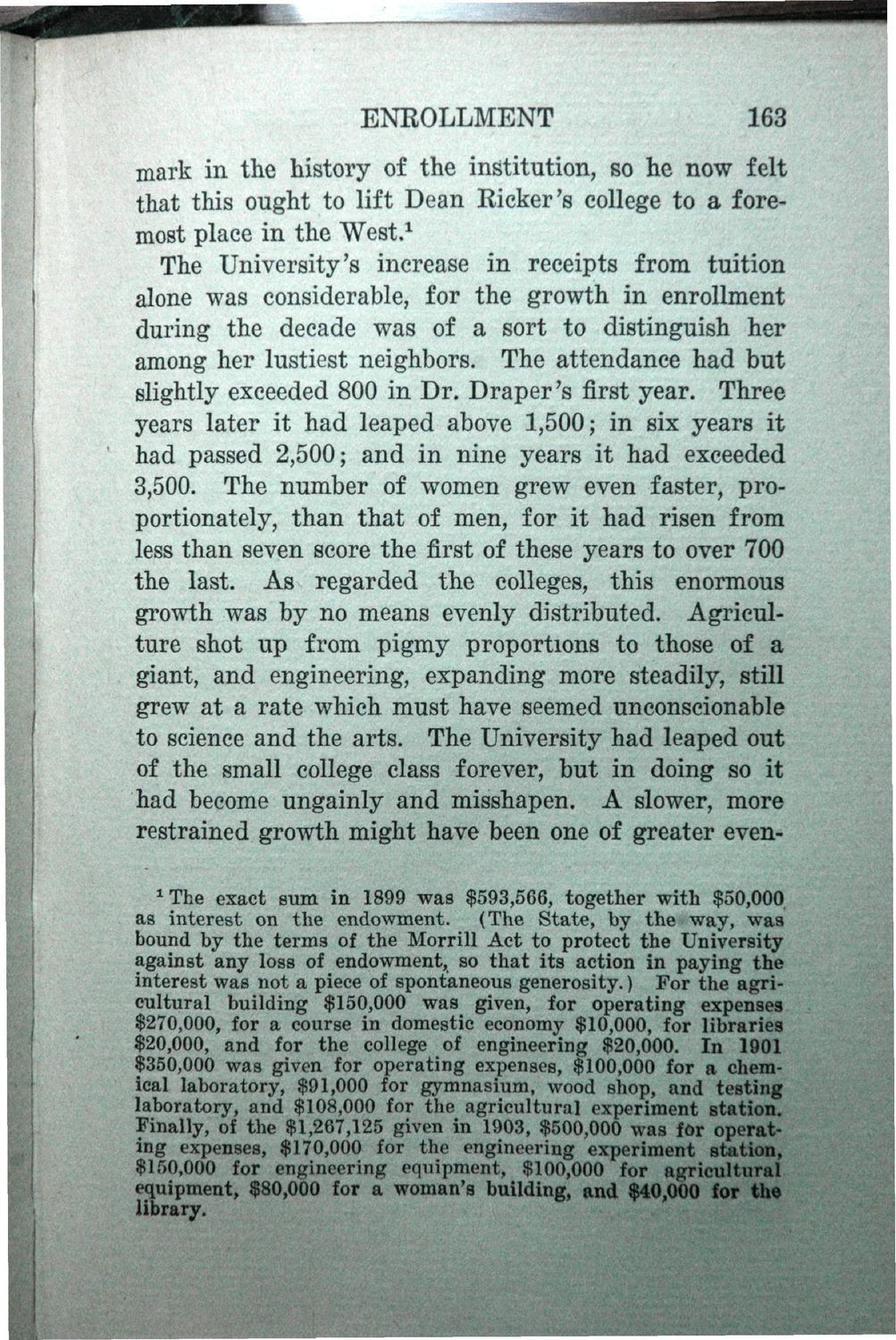| |
| |
Caption: Book - History of the University (Nevins)
This is a reduced-resolution page image for fast online browsing.

EXTRACTED TEXT FROM PAGE:
ENROLLMENT 163 mark in the history of the institution, so he now felt that this ought to lift Dean Bicker's college to a foremost place in the West.1 The University's increase in receipts from tuition alone was considerable, for the growth in enrollment during the decade was of a sort to distinguish her among her lustiest neighbors. The attendance had but slightly exceeded 800 in Dr. Draper's first year. Three years later it had leaped above 1,500; in six years it had passed 2,500; and in nine years it had exceeded 3,500. The number of women grew even faster, proportionately, than that of men, for it had risen from less than seven score the first of these years to over 700 the last. As regarded the colleges, this enormous growth was by no means evenly distributed. Agriculture shot up from pigmy proportions to those of a giant, and engineering, expanding more steadily, still grew at a rate which must have seemed unconscionable to science and the arts. The University had leaped out of the small college class forever, but in doing so it had become ungainly and misshapen. A slower, more restrained growth might have been one of greater evenThe exact sum in 1899 was $593,566, together with $50,000 as interest on the endowment. (The State, by the*way, was bound by the terms of the Morrill Act to protect the University against any loss of endowment, so that its action in paying the interest was not a piece of spontaneous generosity.) For the agricultural building $150,000 was given, for operating expenses $270,000, for a course in domestic economy $10,000, for libraries $20,000, and for the college of engineering $20,000. In 1901 $350,000 was given for operating expenses, $100,000 for a chemieal laboratory, $91,000 for gymnasium, wood shop, and testing laboratory, and $108,000 for the agricultural experiment Btation. Finally, of the $1,267,125 given in 1903, $500,000 was for operating expenses, $170,000 for the engineering experiment station, $150,000 for engineering equipment, $100,000 for agricultural equipment, $80,000 for a woman's building, and $40,000 for the library. 1
| |